According to the assessment of the Politburo , the development index in many areas of the North Central and Central Coast is lower than the national average. The potential and advantages of the region, especially the marine economy, have not been exploited properly and effectively. The development of coastal economic zones and seaports is not commensurate with the potential and advantages...
How to make this land, often compared to a "carrying pole", develop commensurate with its potential and position is always a concern of the Central leaders, ministries, branches and localities in the region.
On November 3, 2022, the Politburo issued Resolution No. 26-NQ/TW on " Socio -economic development and ensuring national defense and security in the North Central and Central Coast regions by 2030, with a vision to 2045". The Resolution sets the goal of building and developing the North Central and Central Coast regions by 2030 to become a region with dynamic, fast and sustainable development, strong in marine economy; with synchronous and modern socio-economic infrastructure, high resilience to natural disasters, epidemics and effective adaptation to climate change...
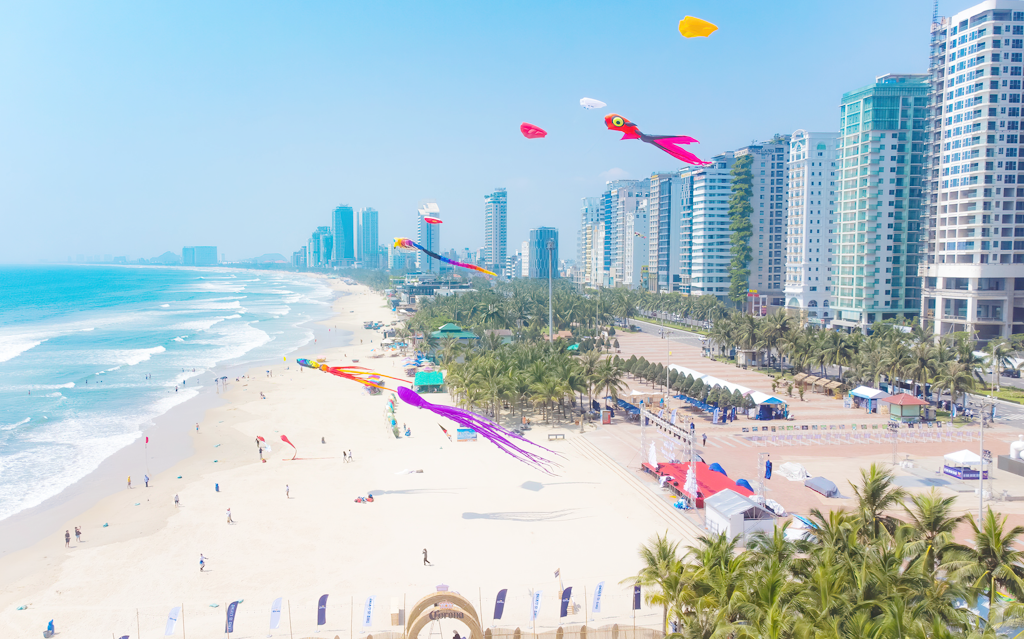
Da Nang has long, beautiful beaches, so sea tourism is a strength of this city.
STRENGTHENING REGIONAL CONNECTIONS
Resolution No. 26-NQ/TW identifies the improvement of institutions and policies and the promotion of regional linkage development as one of the top tasks and solutions in the development strategy of the North Central and Central Coast regions. In particular, the Politburo requires high consensus at all levels and sectors on the role, position, and importance of the region and regional development linkage; considering regional development linkage as an inevitable trend, a driving force connecting and leading the development of localities in the region. At the same time, research on the organization of regional development space according to sub-regions: North Central sub-region, Central Central sub-region and South Central sub-region, strengthening organic connections between these sub-regions with the Central Highlands, the Red River Delta and the Southeast...
Mr. Ho Quoc Dung, Secretary of Binh Dinh Provincial Party Committee
The Politburo also requested to review and adjust mechanisms, policies and investment resources to improve the effectiveness of cooperation in developing inter-provincial plans, such as: South Thanh Hoa - North Nghe An, South Nghe An - North Ha Tinh, South Ha Tinh - North Quang Binh, South Phu Yen - North Khanh Hoa. At the same time, research on development plans for inter-provincial areas, such as North Quang Nam - South Da Nang, North Phu Yen - South Binh Dinh. Continue to invest in and develop economic corridors such as: Lao Bao - Dong Ha - Da Nang; La Lay - My Thuy; Cau Treo - Vung Ang; Bo Y - Pleiku - Quy Nhon; Van Phong - Buon Ma Thuot; Phu Yen - Dak Lak.
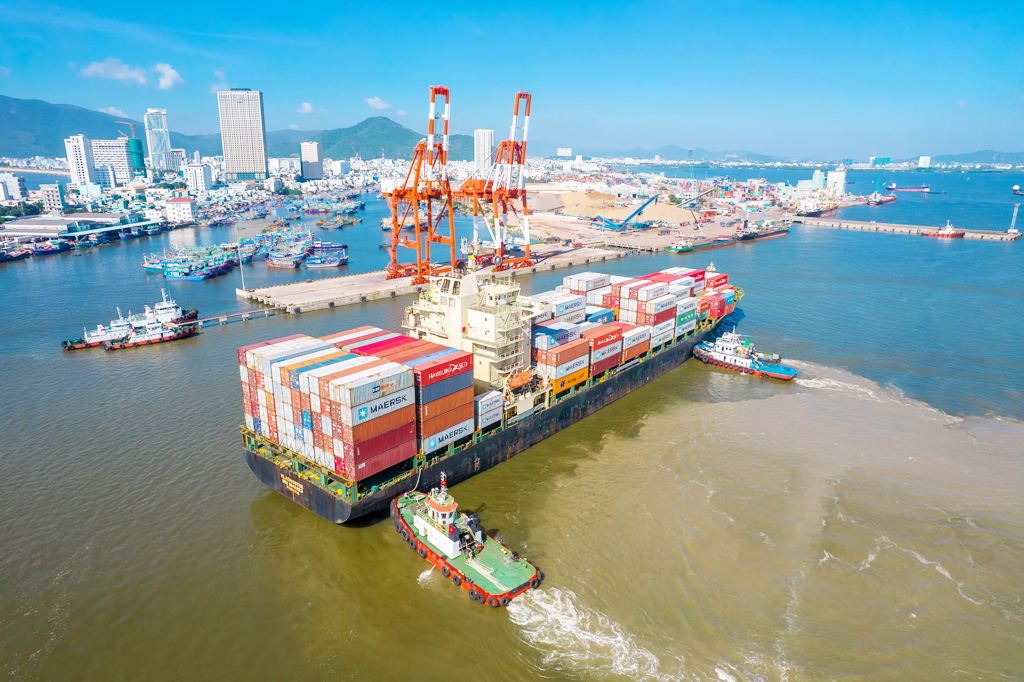
Quy Nhon Port (Binh Dinh), the gateway to the sea of the Central Highlands provinces
Currently, many provinces and cities in the Central region have signed cooperation and association agreements with neighboring provinces to plan and orient economic development. In particular, the Provincial Party Committees of Thanh Hoa - Nghe An - Ha Tinh provinces have signed a memorandum of understanding on development cooperation for the period 2022 - 2025. The leaders of these provinces have identified cooperation and association with neighboring localities as a cross-cutting task for socio-economic development, especially promoting the development linkage of the southern Nghe An - northern Ha Tinh region and the southern Thanh Hoa - northern Nghe An region according to the planning approved by the Prime Minister.
According to the People's Committee of Nghe An province, the planning of the northern part of the province will be linked to the southern part of Thanh Hoa. In particular, step by step development and urbanization will expand Hoang Mai town to some areas of Quynh Luu district (Nghe An) linked to the development of Nghi Son Economic Zone (Thanh Hoa) and Dong Hoi seaport (Nghe An). Nghe An province will also develop Hoang Mai and Dong Hoi industrial parks with processing and manufacturing industries, electronics industries and industries, and support services for large projects in the Southeast Economic Zone (Nghe An) and Nghi Son Economic Zone.
To the south, Nghe An will be linked with the north of Ha Tinh, developing space and connecting the two sides of Lam River, including the expanded Vinh City (Nghe An) area and Nghi Xuan area (Ha Tinh) to have unified development orientations, support sharing of functions, and promote the potential advantages of each area.
Mr. Le Truong Luu, Secretary of the Thua Thien-Hue Provincial Party Committee, said that the province is orienting the development of Chan May Port together with Phu Bai International Airport to form a logistics center of the Central Key Economic Zone and the output of the East-West Economic Corridor; linking Chan May urban area and Da Nang urban area to exploit and promote advantages, becoming the driving force for development of the North Central and Central Coast regions...
The leaders of Da Nang City also oriented to develop Da Nang High-Tech Park by 2030 in sync with the Hoa Lac High-Tech Park and Ho Chi Minh City, becoming the nucleus of socio-economic development of the Central Highlands region. Quang Nam Province will continue to invest in construction to develop Chu Lai Open Economic Zone in association with Dung Quat Economic Zone of Quang Ngai Province and supporting industries and services associated with Chu Lai Airport. The leaders of Binh Dinh, Phu Yen, Khanh Hoa, Ninh Thuan provinces... also proposed a policy to strengthen regional connectivity, especially connectivity with neighboring provinces and the Central Highlands provinces by building an East-West expressway system to connect the North-South expressway and seaports, airports... to form a complete transportation network.
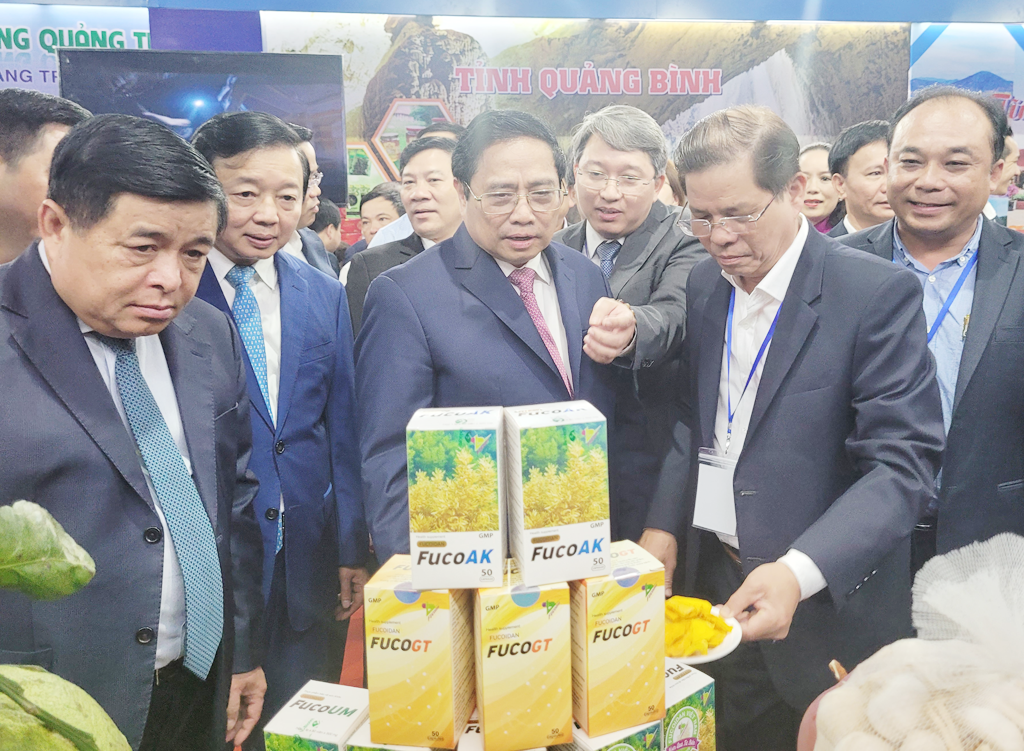
Prime Minister Pham Minh Chinh visited the exhibition booth of typical agricultural products of the Central provinces within the framework of the Conference to deploy the Government's Action Program to implement Resolution No. 26-NQ/TW in Binh Dinh in February 2023.
UNIFIED MANAGEMENT AND COORDINATION
According to Mr. Ho Quoc Dung, Secretary of Binh Dinh Provincial Party Committee, in order to develop the whole region, the Government needs to soon complete the National Master Plan, regional planning, and at the same time have synchronous and unified mechanisms and policies for the whole region to create a driving force for development; promote intra-regional and sub-regional linkages, and in regional planning, sub-regions should be formed in a multi-functional direction. Currently, localities in the North Central and Central Coast regions still have a very large coastal land fund with many advantages. Therefore, it is necessary to create a breakthrough in faster development of maritime transport infrastructure, the North-South Expressway, routes connecting the East with the West, developing airport and seaport infrastructure, etc. to promote the advantage of being the gateway to the sea of the provinces in the region, thereby promoting the development of the marine economy.
"When the coastal dynamic route forms an inter-regional connection, the Government is requested to direct the planning and construction of a unified coastal economic axis, in which priority is given to the development of economic zones as the core to promote and support the development of the marine economy. At the same time, direct a comprehensive review and adjustment of the development of functional sub-regions in economic zones to ensure mutual support and avoid competition between economic zones," said Mr. Ho Quoc Dung.
At the Conference on the implementation of the Government's Action Program to implement Resolution No. 26-NQ/TW (held in Binh Dinh on February 5, 2023), Prime Minister Pham Minh Chinh requested to do a good job of planning for the 2021-2030 period, with a vision to 2050, to coordinate and manage in a unified manner, ensuring connectivity, synchronization, unity, efficiency and sustainable development. Identifying planning as a key task, planning must be one step ahead, with a long-term, strategic vision, both promoting potential and strengths and overcoming limitations. Forming inter-provincial and inter-regional industry clusters associated with strong marine economic centers.
PROMOTING MARINE ECONOMY
Promoting the transformation of regional economic structures, promoting the development of the marine economy, focusing on the strong development of urban systems, especially coastal urban systems... are also solutions proposed by the Politburo and the Government to build and develop the North Central and Central Coast regions. Developing a regional urban system with synchronous and modern technical and social infrastructure according to the model and criteria of green growth, smart and ecological urban areas, effectively adapting to climate change, connecting domestically and internationally, considering this as one of the breakthroughs for regional development.
Accordingly, the Politburo oriented the development of urban networks associated with the development of economic zones, industrial parks, high-tech parks, industrial clusters, border economic zones, trade and service centers in a multi-center direction to create a closely linked network between localities in the North Central and Central Coast regions. Forming 3 urbanized sub-regions in the North Central, Central Central and South Central regions. Developing central urban areas, nuclear urban areas at the regional and sub-regional levels such as: building and developing Thua Thien-Hue province and Khanh Hoa province into centrally-run cities, building Da Nang into a regional international financial center, developing Ly Son island district (Quang Ngai) into a sea and island tourism center.
Marine economic sectors are focused on development such as: marine tourism and services, maritime economy, exploitation of oil and gas and other marine mineral resources, aquaculture and seafood exploitation, coastal industry, renewable energy (onshore and offshore wind energy), new marine economic sectors. Focus resources on developing seaports with the potential to become special seaports, especially seaports in Thanh Hoa, Nghe An, Da Nang and Khanh Hoa.
According to Minister of Agriculture and Rural Development Le Minh Hoan, to develop the marine economy, the Central region needs to reorganize seafood exploitation activities, restructure occupations, and restructure labor in accordance with natural conditions, customs, and the capacity of each household. Encourage the development of marine aquaculture, associated with environmentally friendly marine ecotourism.
"It is time for us to change the stereotype that tourism goes where seafood goes. Now it is different, tourism and aquaculture can support each other, through activities to educate tourists about environmental awareness. To achieve this goal, fishing service vessels at sea and logistics service stations on islands need to be improved in efficiency, and fishing centers must continue to be invested in and upgraded. Fishing ports no longer only receive fishing vessels but must be operated in a multi-functional direction, combining tourism, creating community spaces to provide knowledge about marine and ocean conservation...", said Minister Le Minh Hoan.
Deputy Minister of Natural Resources and Environment Tran Quy Kien said that in the North Central and Central Coast regions, it is necessary to focus on developing a blue marine economy, opening up to the sea, forming key economic sectors such as: marine tourism, maritime, renewable energy, marine biotechnology... Developing economic zones, export processing zones, industrial parks, services and urban areas in this region according to the circular economic model to connect the green energy - green production economic ecosystem and the seaport system to take the lead in green transformation, integrating the trend of the times to help products overcome strict environmental barriers and carbon standards, participate in the global supply chain and penetrate the markets of developed countries.
To implement Resolution No. 26 of the Politburo, the Government issued
Resolution No. 168/NQ-CP dated December 29, 2022 on the Government's action program to implement
This resolution. Accordingly, the Government sets out 8 groups of key tasks and solutions, including:
Thoroughly grasp, propagate, and create consensus in building and organizing the implementation of programs and action plans to implement Resolution No. 26-NQ/TW.
Perfecting institutions and policies and promoting regional linkage development.
Shifting regional economic structure, promoting marine economic development.
Strongly develop the urban system, especially the coastal urban system; promote investment in regional socio-economic infrastructure, especially transport infrastructure.
Effectively manage and use resources, especially marine, island and forest resources; protect the environment, especially the marine environment; improve the ability to respond to natural disasters and adapt to climate change.
Comprehensive development of regional culture and society.
Ensure national defense and security, improve the effectiveness of foreign affairs.
Strengthening Party building and rectification and the political system; improving the effectiveness and efficiency of management at all levels of government; consolidating the great solidarity bloc of the people in the region.
Source link


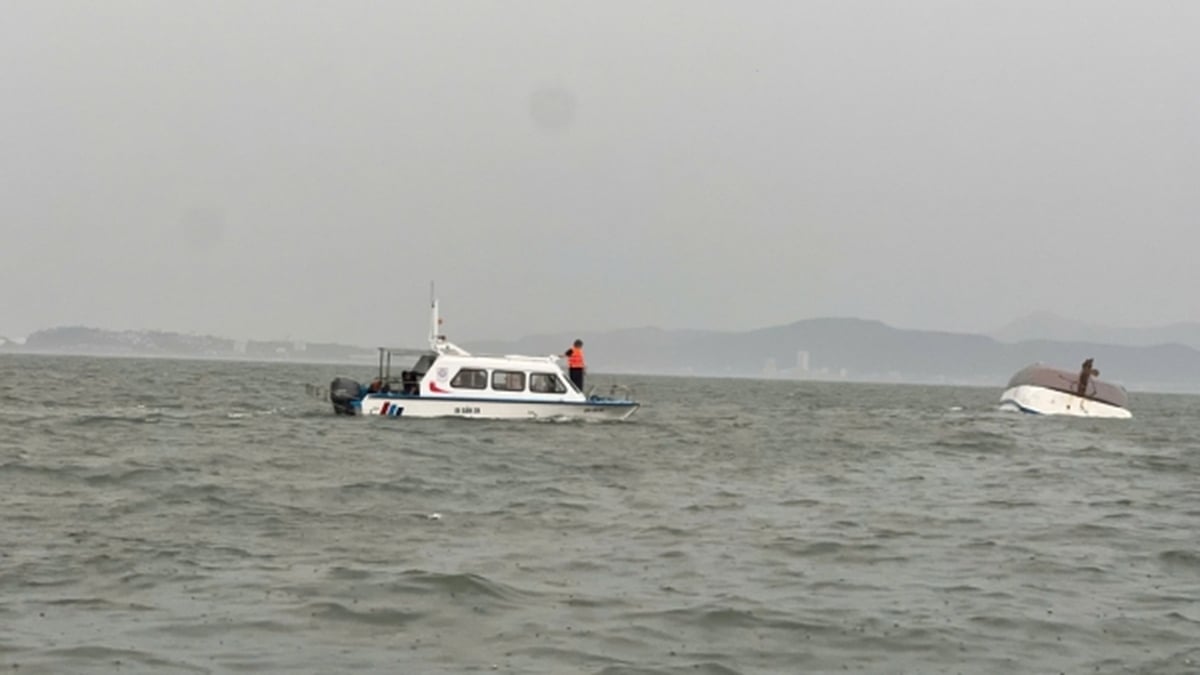
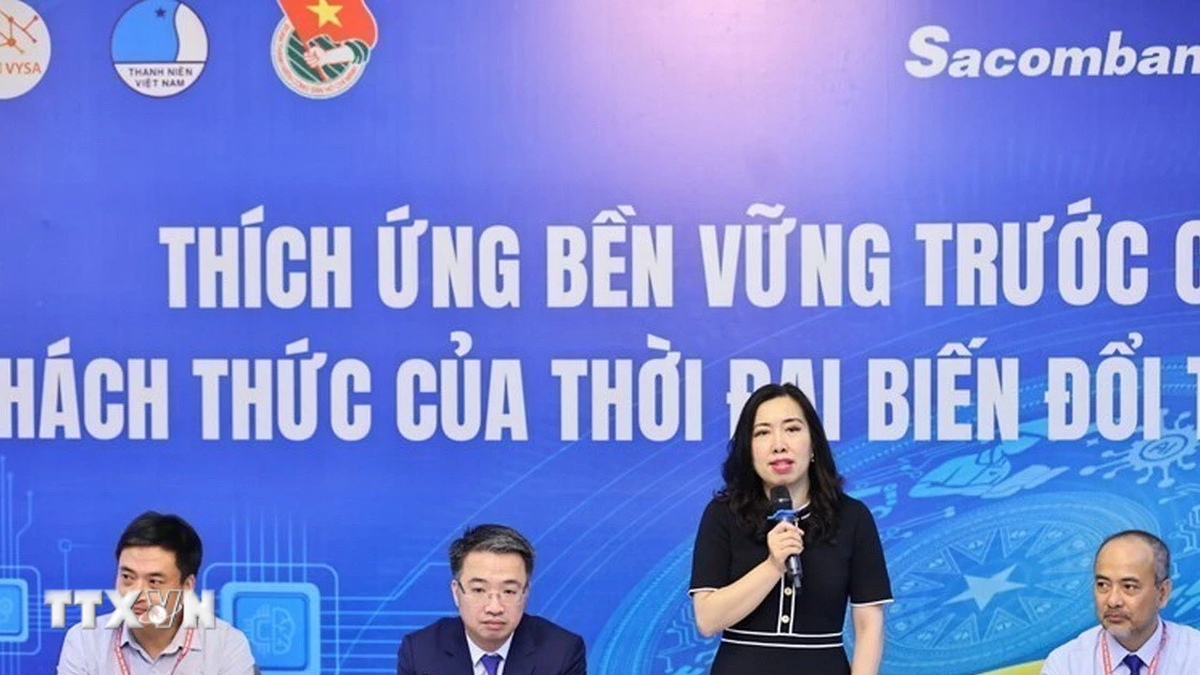





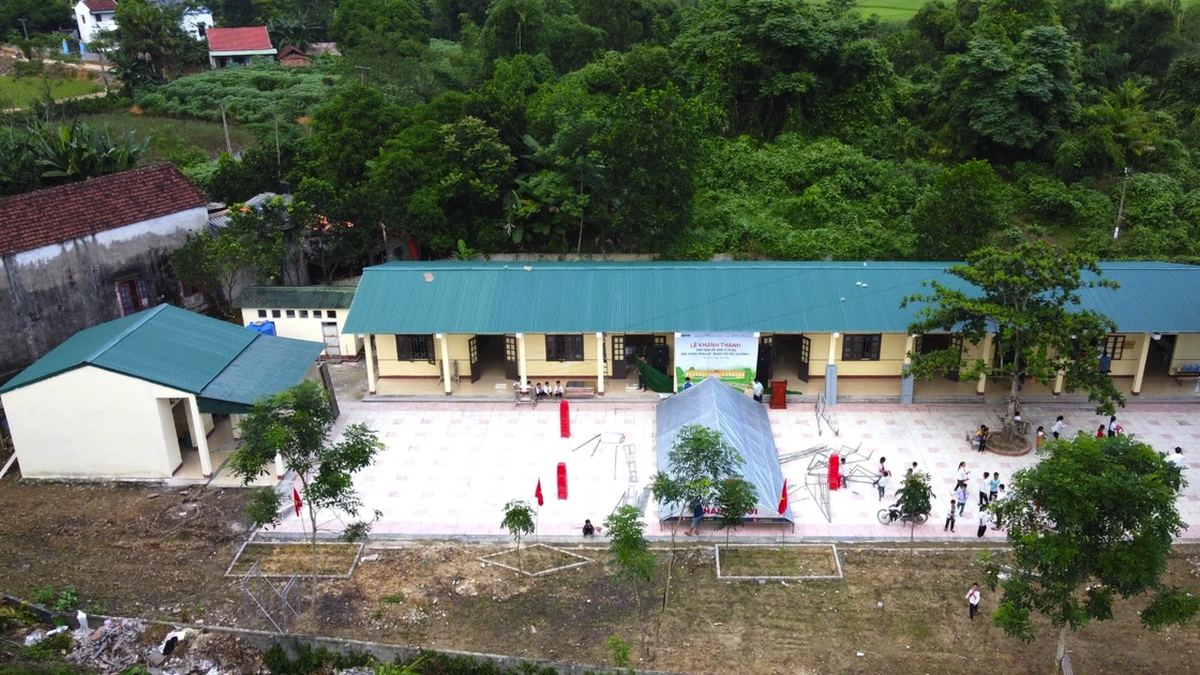
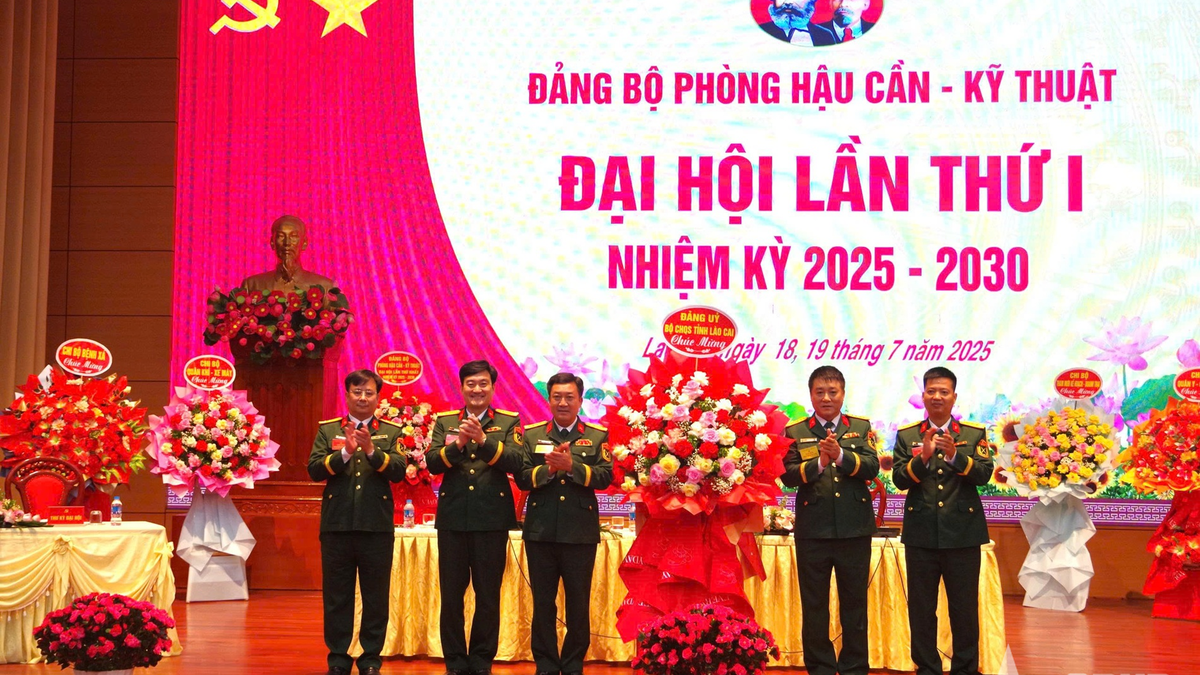






















































































Comment (0)